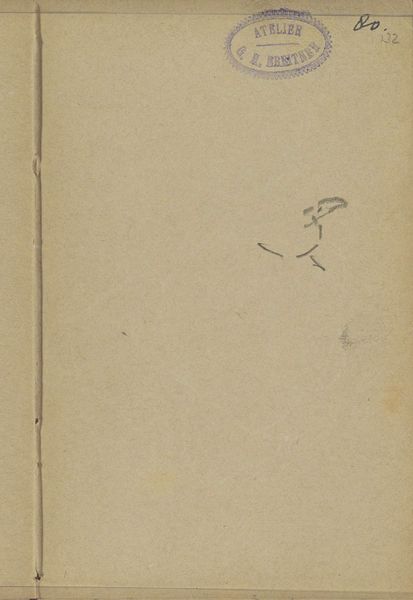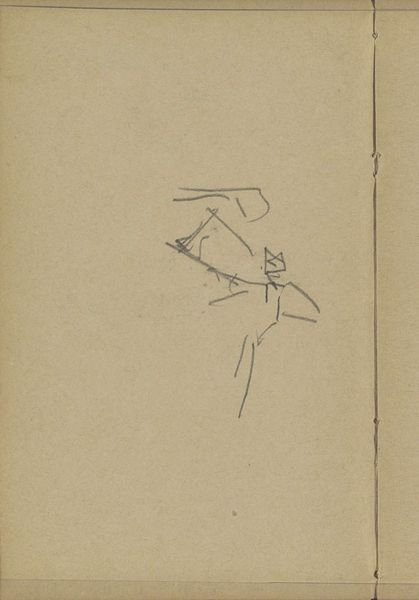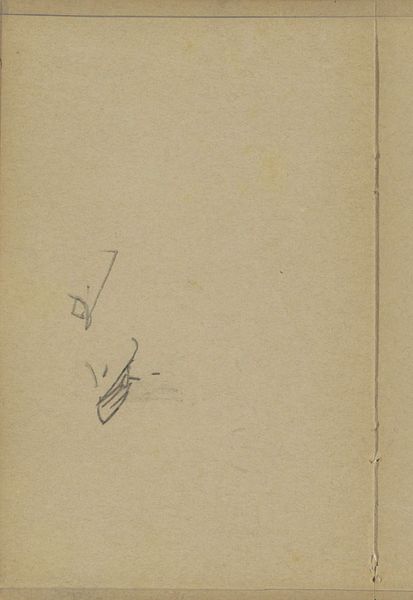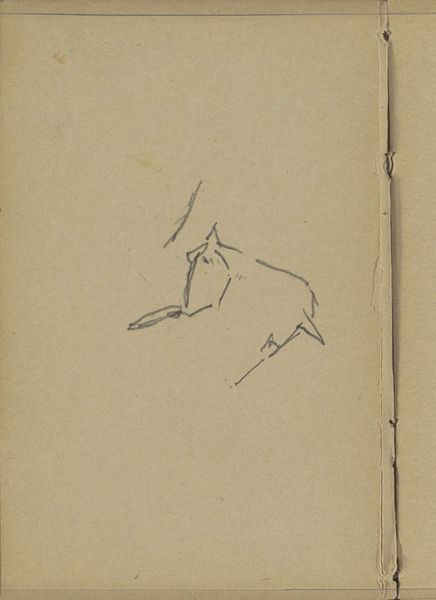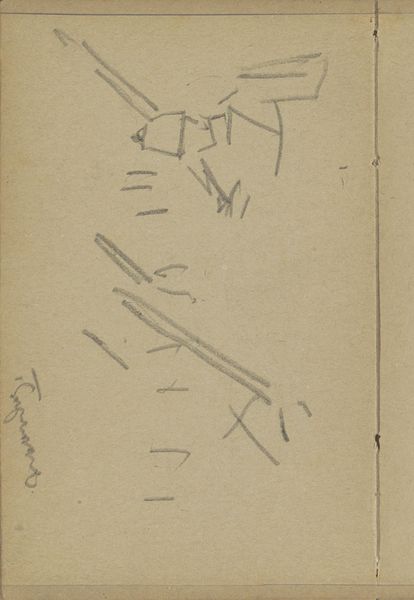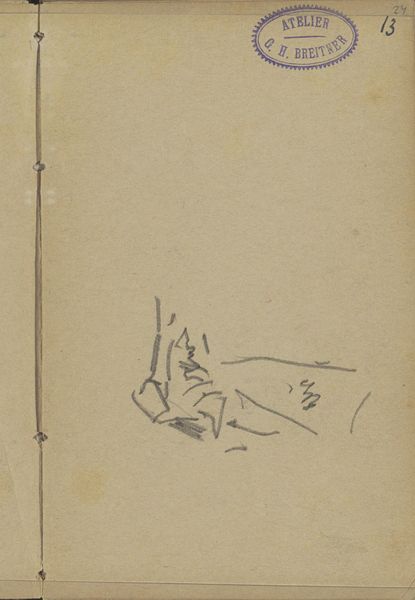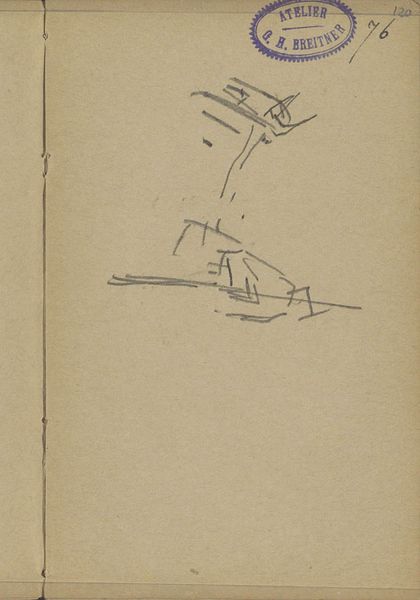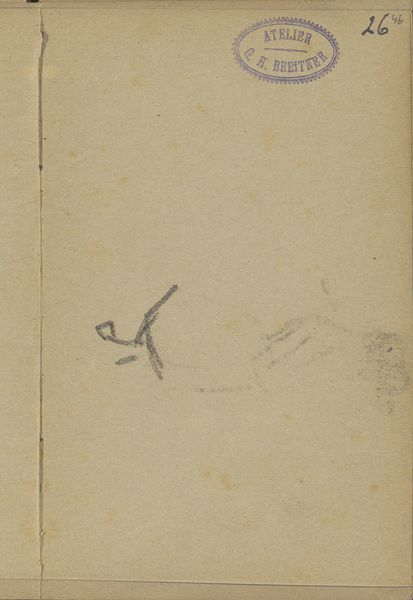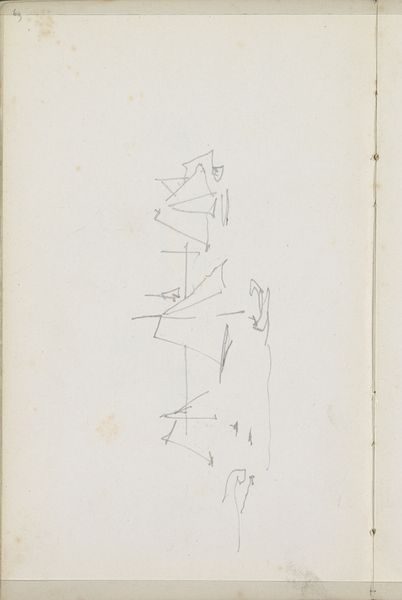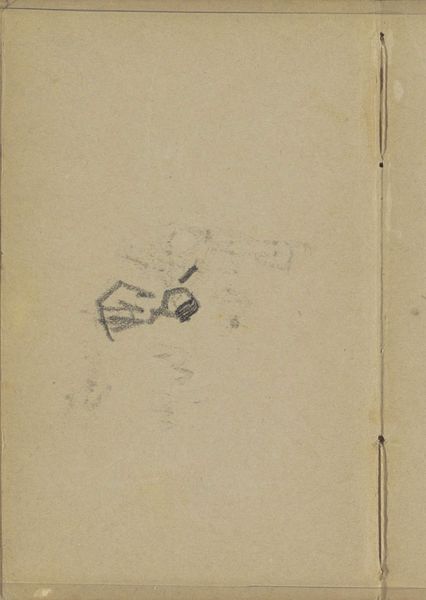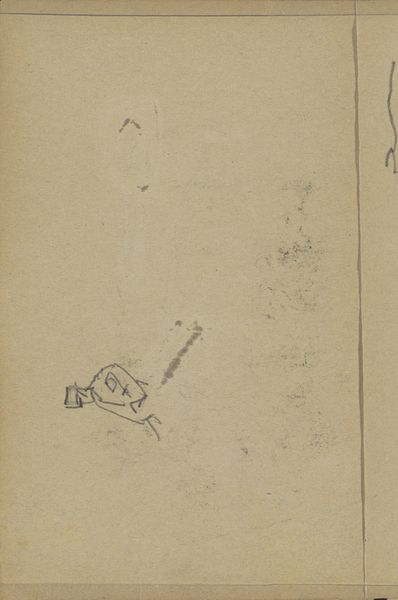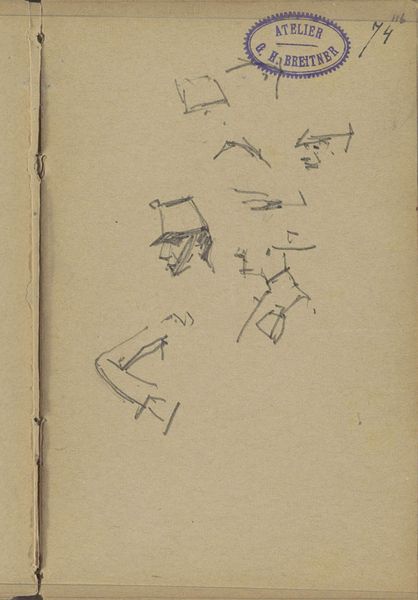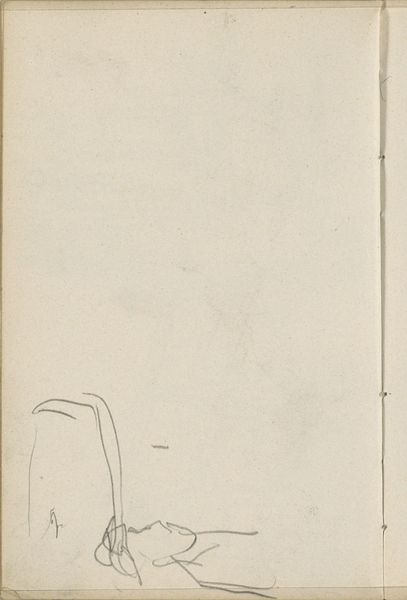
drawing, paper, pencil
#
portrait
#
drawing
#
amateur sketch
#
aged paper
#
toned paper
#
light pencil work
#
impressionism
#
sketch book
#
hand drawn type
#
paper
#
personal sketchbook
#
idea generation sketch
#
pencil
#
sketchbook drawing
#
sketchbook art
Copyright: Rijks Museum: Open Domain
Editor: Here we have "Studie, mogelijk van een mannenhoofd," which roughly translates to "Study, possibly of a man's head," made by George Hendrik Breitner between 1887 and 1891. It's a pencil drawing on paper currently held at the Rijksmuseum. The sketch is quite minimal; it's like a quick visual note. What strikes you most about this piece? Curator: It's intriguing precisely because of its incompleteness. Think about the late 19th century – the rise of photography, the pressure on painting to be "real." Artists like Breitner were grappling with how to depict reality, not just reproduce it. A sketch like this shows the *process* of seeing, rather than a finished product. Where was art heading at this period? How were institutions promoting and consuming impressionistic art? Editor: So, this sketch is less about the final image and more about the artist's thought process? I mean, it looks like something I would do, absentmindedly in my sketch book... What was the perception of these pieces in the artist's circles? Curator: Exactly! Think of the societal changes – growing urban life, industrialization – Breitner was deeply interested in capturing fleeting moments, and raw reality. This "unfinished" quality was embraced by some as more truthful than a highly polished academic painting, which had long been institutional orthodoxy. How do you think its value as ‘truthful’ resonates today given photography has advanced to hyper realistic? Editor: That's fascinating! Seeing this as a kind of social commentary through artistic technique shifts my understanding completely. The drawing feels even more honest now, reflecting a moment of uncertainty in both art and society. The image itself looks quite amateur compared to a full portrait. I see an honesty and immediacy in it, a kind of ‘realism’ absent from fully realized, classical portraiture. Thank you. Curator: And hopefully this gives some insight into how social conditions, or societal needs shape the way art is consumed! It encourages us to challenge our assumptions and look for deeper meanings, considering artistic circles within a context.
Comments
No comments
Be the first to comment and join the conversation on the ultimate creative platform.
